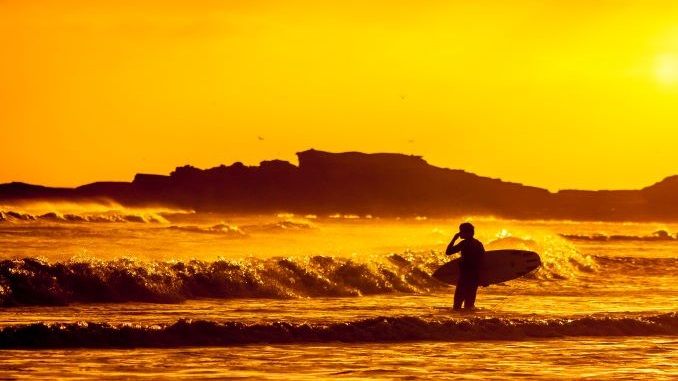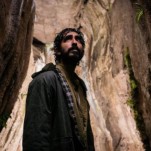The Six Best Surfing Beaches in Baja California
A guide to Baja’s best breaks
Photo from Unsplash
2,038. That is the number of miles of coastline surrounding Baja California and its islands. The roughly 800-mile long peninsula is the second biggest peninsula in the world, which for surfers means countless beaches where they can pull over, unload a board and hop in the water. On most surfer’s bucket list is a trip down the Baja Coast stopping only for waves, fish tacos and tequila-based beverages. For those who want to make that happen, here are the six best beaches from north to south for surfers along Baja’s Pacific Coast.
Baja Malibu
Known for constant beach breaks and some of the biggest waves along the peninsula, Baja Malibu beach is the first popular surfing hotspot once you cross the border. Located in Rosarito just 18 miles south of the US-Mexico border, Baja Malibu is a quick day trip from San Diego. When all the elements line up, the beach is known as a world-class surfing spot for intermediate and advanced surfers. Winter months are when the waves really shine with huge barrels thanks to northwest swells. Summer months can see decent, albeit inconsistent, beach breaks. Most surfers bypass Baja Malibu for the classic Baja spots like K38, La Fonda and San Miguel 30 minutes south meaning the water is never overly crowded and there is always room in the lineup.
K-38
This famous cluster of excellent surf breaks is known as K-38 because it is located at Kilometer 38 of the Baja Highway 1. January is the best month for K-38 where according to the Surf Forecast about half of the time the waves hold up well for longer rides in prevailing cross-offshore, offshore or light wind conditions. That said, the exposed reef break produces surf-able waves year round. Because K-38 is famous for its consistent, high-quality waves, the beach is known to get packed during weekends. A midweek Baja surf trip is ideal if you don’t want to fight for waves.
One downfall is the rocky surfaces. Booties to protect feet from rocks, reef and sea urchins are always a good idea. Also, try to find secure parking at a hotel or paid parking lot with a security guard. The area is known for break-ins and vehicle theft.
Isla Todos Santos
Not to be confused with the town of Todos Santos at the southern tip of Baja, Isla Todos Santos is an island 10 miles off the coast of Ensenada. Waves here are not for the casual surfer. The break—known as Killers—produces some of the most powerful waves in the world. Waves in the area can reach a potential of 50-foot faces. Strong currents, rocks and huge waves make the water unsuitable for anyone but the most experienced big wave riders. The infamous point-break can only be accessed by boat.
The best time to surf Todos Santos’ Killers is early in the morning from November through March. Even if you are not a big wave surfer, hopping a charter boat from Ensenada to watch surfers battle the big waves is a great way to spend a day.
Scorpion Bay
In recent years the small fishing village of San Juanico, better known as Scorpion Bay, has transformed into a classic Baja surf spot. The long, sweeping beach has four point breaks that produce vastly different types of waves making the spot perfect for groups of surfers with varying degrees of skill levels. The first and second points are typically smaller waves making it exceptional for beginner surfers and longboarders. The third and fourth breaking points are steeper creating long barrels where surfers can ride waves for a minute or more.
When all the conditions are on point the bay can produce world-class waves, although Scorpion Bay is known for inconsistent surf conditions. In general, spring and summer offer the most consistent surf. If waves are not pumping, charter a fishing boat and go fishing with local fishermen. Because of its remote location, the water is never overly crowded. Nearby campsites and one hotel house overnight guests.
Playa Los Cerritos
About 20 minutes from the popular artist town of Todos Santos is Playa Los Cerritos. The long sandy beach butts up next to the rocky point of a cliff. The beach is known for its highly constant surf making every day of the year a great day to go surfing. Because of the consistency, surf schools gravitate towards this beach to teach newbie surfers how to catch a wave.
The beach caters to both beginners and experienced surfers depending on how big the swell is. Because of increasing tourism in the area the beach can get quite crowded. To escape the crowds, head away from the rocky point to a secluded area on the northside of the beach. Despite the crowded water, the area still maintains a laid-back, friendly vibe. The sunsets are a spectacular reason to stick around after a long day of surfing.
Los Cabos
Finally we make it to the southern tip of the peninsula, where the Pacific Ocean meets the Sea of Cortez. The Los Cabos area is home to picturesque beaches popular with snorkelers, scuba divers and surfers. For surfers, Costa Azul Beach on the southwestern edge of San José del Cabo might have the best break in the whole area. The low-key sandy beach is popular with locals and tourists of all skill levels.
The surf here breaks in two places along the beach. The northernmost break is best for intermediate surfers. The far south side of the beach is best for beginners because the swells are more sheltered and tend to form an all-round mellower wave. Summer surfing is great at Costa Azul Beach, but winter surfing can be hit-or-miss.
Jennifer Simonson is a travel writer by trade and a lover of the world’s food, cultures, drinks and outdoor spaces by nature.






































